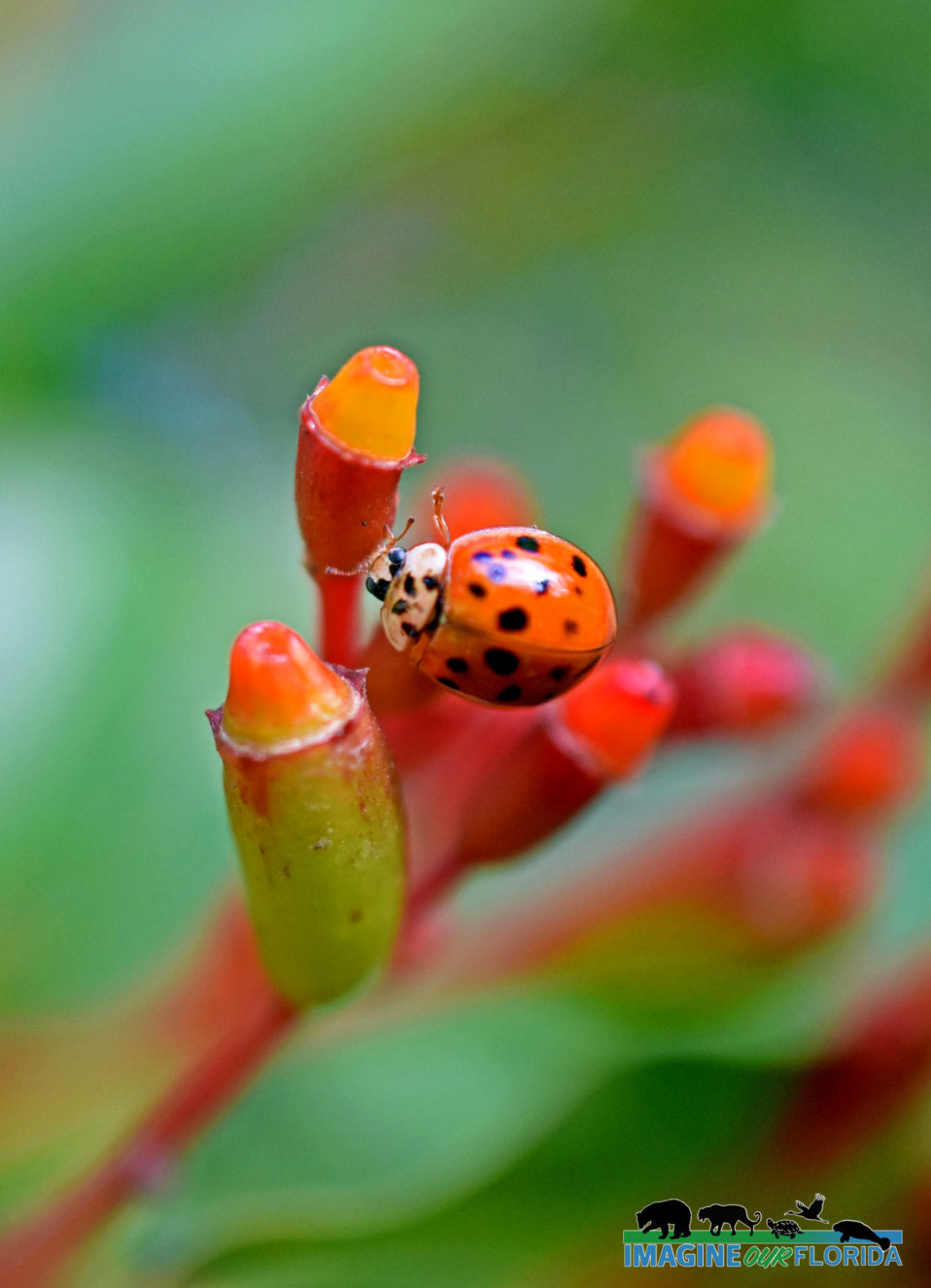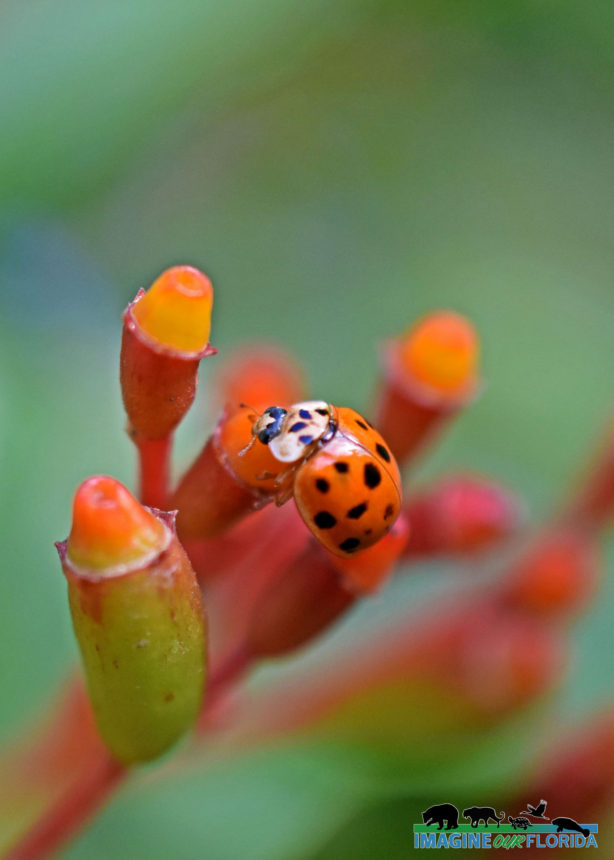Ladybugs (Coccinellidae), aka Lady Bettles, a worldwide symbol of good luck, are best known for their voracious appetite for aphids. As omnivores, they dine on whiteflies, mites, mealybugs, scale insects, and mildews and can devour up to 5,000 aphids in their lifetime.
Ladybugs live two to three years and grow between 1/3 and slightly over 3/8 of an inch. Female ladybugs lay golden eggs on the underside of leaves, often near an aphid colony. In a few days, the eggs hatch, and the larvae will eat between 350 and 400 aphids within two weeks before becoming adults.
Ladybugs’ strikingly bright colors make them easily identifiable but unappealing to predators. A fluid secreted from the joints in their legs also makes them taste bad. Ladybugs will outsmart their predators by secreting the foul smell while playing dead.
When temperatures fall, Ladybugs enter diapause and live off their stored reserves for up to nine months. When the temperature warms to 55°, they resume everyday life. As they take flight, their tiny wings beat about 85 times per second.
Did you know Ladybugs went to Outer Space? A space shuttle carried four ladybugs and a jar of aphids as part of a zero-gravity experiment. Ladybugs did not need gravity to dine on the aphids.
It is not a good idea to purchase Ladybugs. Most that are for sale have been wild-caught. No studies have been done to determine whether or not any harm is being done to the Ladybug population in the area where they are caught. This can result in more pesticide use when ladybugs are not present. Ladybugs are not tested for disease before shipment so that they could introduce disease-carrying pathogens to native Ladybugs in your area. Ladybugs introduced to your garden will fly away if there are insufficient food sources.
The best way to attract some of Florida’s 98 species of Ladybugs to your landscapes is to avoid chemicals. Learn to identify the larvae and leave them alone to eat the harmful pests in your garden.
Photo Credit: Andy Waldo



Recent Comments